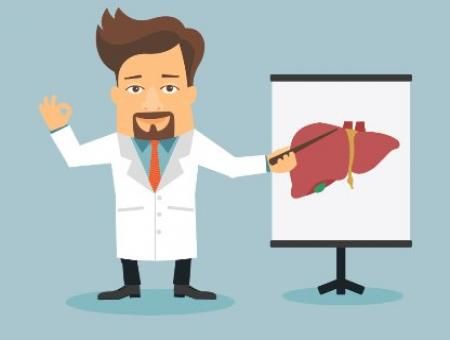
Fatty Liver Disease: 5 Practical Tips for Manage Fatty Liver in Young Adults
By Dr. Deepak Lahoti in Gastroenterology, Hepatology & Endoscopy
Apr 25 , 2024 | 2 min read
Your Clap has been added.
Thanks for your consideration
Share
Share Link has been copied to the clipboard.
Here is the link https://www.maxhealthcare.in./blogs/tips-to-manage-fatty-liver-disease
In recent years, fatty liver disease has been rising among young adults. Once considered a condition primarily affecting older individuals, fatty liver disease is now affecting a growing number of individuals in their 20s and 30s, especially in cities. The prevalence of fatty liver disease among young people is often attributed to a combination of poor diet, sedentary lifestyle, obesity, and genetic factors. When the liver becomes burdened with excess fat, the ability to filter toxins from the blood and process nutrients gets compromised.
Understanding Fatty Liver
Fatty liver disease refers to fat accumulation in the liver. This excess fat (more than 5%) can lead to inflammation and liver damage over time. There are two kinds of fatty liver disease:
1) Alcoholic fatty liver disease caused by excessive alcohol consumption.
2) Non-alcoholic fatty liver disease (NAFLD), which occurs in individuals who drink little to no alcohol.
Patients with fatty liver disease become vulnerable to developing blood pressure & heart disease.
Signs and Symptoms
Fatty liver disease is asymptomatic in its early stages, which makes it challenging to detect without proper testing. However, as the condition progresses, certain signs and symptoms may manifest. These can include fatigue, abdominal pain or discomfort, and an enlarged liver. Since these symptoms can be vague and easily attributed to other causes, it's essential for young adults to be proactive about their liver health.
Practical Tips for Management
- Dietary Changes: Young adults must consume fruits, vegetables, whole grains, and lean proteins. Reducing the intake of saturated fats, sugars, and processed foods can also benefit liver health. For those with alcoholic fatty liver disease, moderation or avoidance of alcohol is key.
- Exercise and Physical Activity: Aiming for 30 minutes of moderate-intensity exercise most days of the week is a start. Activities like brisk walking, jogging, swimming, and cycling can be excellent choices.
- Weight Management: Obesity is a significant risk factor for fatty liver disease. Young adults should strive to maintain a healthy weight through portion control, mindful eating, and regular physical activity. Even a 5% to 10% body weight decrease helps in improving fatty liver disease.
- Avoidance of Harmful Substances: Young adults should prioritize quitting smoking and avoiding harmful substances to protect their liver health.
- Regular Health Screenings: Blood tests can detect elevated liver enzyme levels, indicating liver inflammation or damage.
Dr Lahoti recommends that young adults should undergo Liver Function Tests (LFTs) regularly to ensure an early diagnosis can be made.
Recommended Frequency of Liver Function Test
| Frequency | Indications |
|---|---|
| Every 6 to 12 Months | For healthy individuals and those with mild to moderate fatty liver disease, and stable liver enzymes |
| Every 3 to 6 Months | For individuals with severe fatty liver disease, elevated liver enzymes, or significant risk factors |
| As advised by the specialist | They may suggest more frequent tests based on individual health status. |
While the prevalence of fatty liver disease continues to rise among young adults, awareness and proactive measures are more critical than ever. By making simple yet impactful changes to diet, exercise, and lifestyle, young people can take charge of their liver health and reduce their risk of complications.

Written and Verified by:
Related Blogs

Dr. Nivedita Pandey In Gastroenterology, Hepatology & Endoscopy , Liver Transplant and Biliary Sciences
Nov 08 , 2020 | 2 min read

Dr. Nivedita Pandey In Gastroenterology, Hepatology & Endoscopy , Liver Transplant and Biliary Sciences
Nov 08 , 2020 | 2 min read

Dr. Nivedita Pandey In Gastroenterology, Hepatology & Endoscopy , Liver Transplant and Biliary Sciences
Nov 08 , 2020 | 2 min read
Blogs by Doctor

What is Jaundice and How to Self Care in Jaundice?
Dr. Deepak Lahoti In Gastroenterology, Hepatology & Endoscopy
Aug 19 , 2016 | 3 min read
Most read Blogs
Get a Call Back
Related Blogs

Dr. Nivedita Pandey In Gastroenterology, Hepatology & Endoscopy , Liver Transplant and Biliary Sciences
Nov 08 , 2020 | 2 min read

Dr. Nivedita Pandey In Gastroenterology, Hepatology & Endoscopy , Liver Transplant and Biliary Sciences
Nov 08 , 2020 | 2 min read

Dr. Nivedita Pandey In Gastroenterology, Hepatology & Endoscopy , Liver Transplant and Biliary Sciences
Nov 08 , 2020 | 2 min read
Blogs by Doctor

What is Jaundice and How to Self Care in Jaundice?
Dr. Deepak Lahoti In Gastroenterology, Hepatology & Endoscopy
Aug 19 , 2016 | 3 min read
Most read Blogs
Specialist in Location
- Best Gastroenterologists in India
- Best Gastroenterologists in Dehradun
- Best Gastroenterologists in Gurgaon
- Best Gastroenterologists in Mohali
- Best Gastroenterologists in Patparganj
- Best Gastroenterologists in Saket
- Best Gastroenterologists in Shalimar Bagh
- Best Gastroenterologists in Ghaziabad
- Best Gastroenterologists in Panchsheel Park
- Best Gastroenterologists in Noida
- Best Gastroenterologists in Saket
- Best Gastroenterologist in Delhi
- Best Gastroenterologist in Nagpur
- Best Gastroenterologist in Lucknow
- Best Gastroenterologists in Dwarka
- CAR T-Cell Therapy
- Chemotherapy
- LVAD
- Robotic Heart Surgery
- Kidney Transplant
- The Da Vinci Xi Robotic System
- Lung Transplant
- Bone Marrow Transplant (BMT)
- HIPEC
- Valvular Heart Surgery
- Coronary Artery Bypass Grafting (CABG)
- Knee Replacement Surgery
- ECMO
- Bariatric Surgery
- Biopsies / FNAC And Catheter Drainages
- Cochlear Implant
- More...




